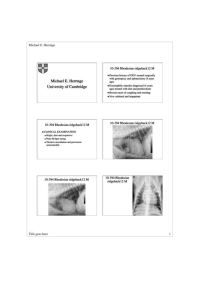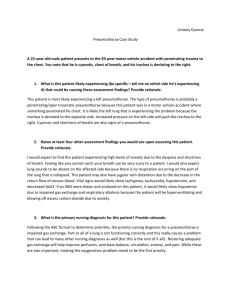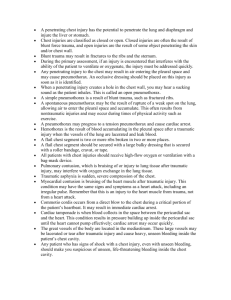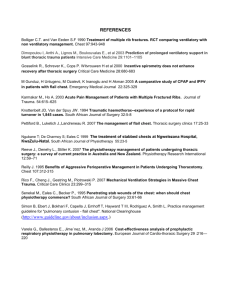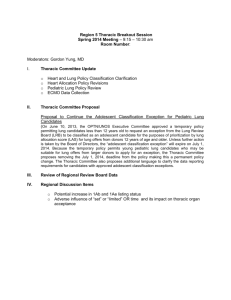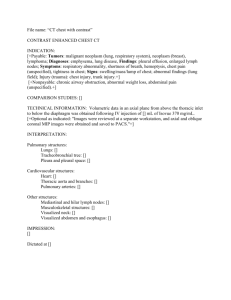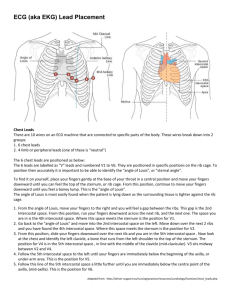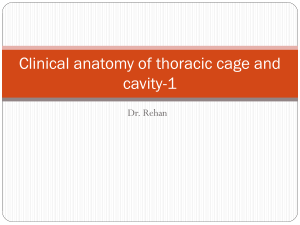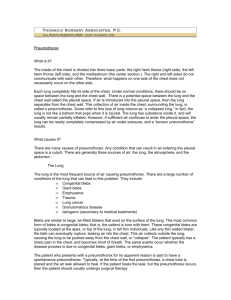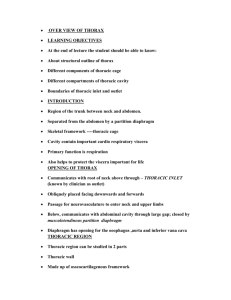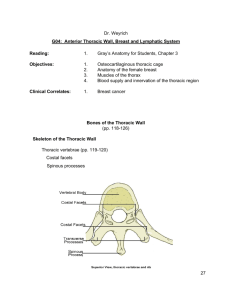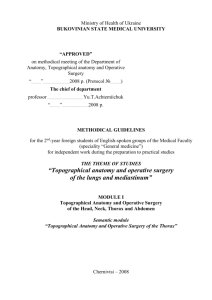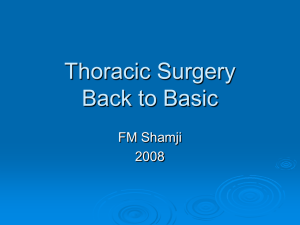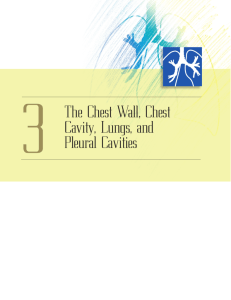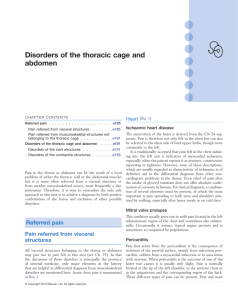局部解剖学实习指导
advertisement
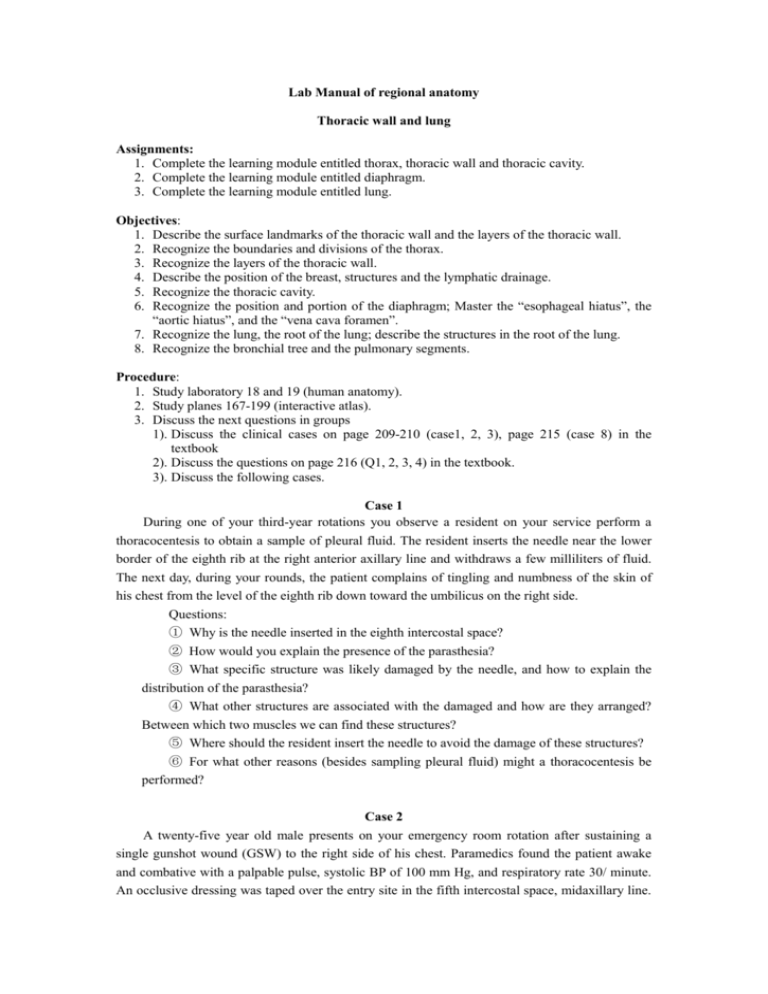
Lab Manual of regional anatomy Thoracic wall and lung Assignments: 1. Complete the learning module entitled thorax, thoracic wall and thoracic cavity. 2. Complete the learning module entitled diaphragm. 3. Complete the learning module entitled lung. Objectives: 1. Describe the surface landmarks of the thoracic wall and the layers of the thoracic wall. 2. Recognize the boundaries and divisions of the thorax. 3. Recognize the layers of the thoracic wall. 4. Describe the position of the breast, structures and the lymphatic drainage. 5. Recognize the thoracic cavity. 6. Recognize the position and portion of the diaphragm; Master the “esophageal hiatus”, the “aortic hiatus”, and the “vena cava foramen”. 7. Recognize the lung, the root of the lung; describe the structures in the root of the lung. 8. Recognize the bronchial tree and the pulmonary segments. Procedure: 1. Study laboratory 18 and 19 (human anatomy). 2. Study planes 167-199 (interactive atlas). 3. Discuss the next questions in groups 1). Discuss the clinical cases on page 209-210 (case1, 2, 3), page 215 (case 8) in the textbook 2). Discuss the questions on page 216 (Q1, 2, 3, 4) in the textbook. 3). Discuss the following cases. Case 1 During one of your third-year rotations you observe a resident on your service perform a thoracocentesis to obtain a sample of pleural fluid. The resident inserts the needle near the lower border of the eighth rib at the right anterior axillary line and withdraws a few milliliters of fluid. The next day, during your rounds, the patient complains of tingling and numbness of the skin of his chest from the level of the eighth rib down toward the umbilicus on the right side. Questions: ① Why is the needle inserted in the eighth intercostal space? ② How would you explain the presence of the parasthesia? ③ What specific structure was likely damaged by the needle, and how to explain the distribution of the parasthesia? ④ What other structures are associated with the damaged and how are they arranged? Between which two muscles we can find these structures? ⑤ Where should the resident insert the needle to avoid the damage of these structures? ⑥ For what other reasons (besides sampling pleural fluid) might a thoracocentesis be performed? Case 2 A twenty-five year old male presents on your emergency room rotation after sustaining a single gunshot wound (GSW) to the right side of his chest. Paramedics found the patient awake and combative with a palpable pulse, systolic BP of 100 mm Hg, and respiratory rate 30/ minute. An occlusive dressing was taped over the entry site in the fifth intercostal space, midaxillary line. On arrival, the patient's vital signs were worse. You note that the patient's trachea is deviated to the left, his jugular veins are distended, he has no breathing sounds on the right side of his chest, he has palpable crepitus, and on percussion he has hyper-resonance on the right side of the chest. The resident on call determines that the patient has a tension pneumothorax and inserts a 14 gauge needle in the right midclavicular line at the second intercostal space - air is heard escaping. A chest tube is inserted at the fifth intercostal space in the midaxillary line and connected to a chest drainage device. The patient was stabilized and transferred to the Trauma Intensive Care Unit (TICU). Questions: ① What might cause the tension pneumothorax? ② Why did the resident insert the chest tube into the fifth intercostal space? ③ What structures did the chest tube pass through to enter the pleural cavity? ④ What is tension pneumothorax? ⑤ What are the signs and symptoms of tension pneumothorax? ⑥ What is the appropriate treatment?


